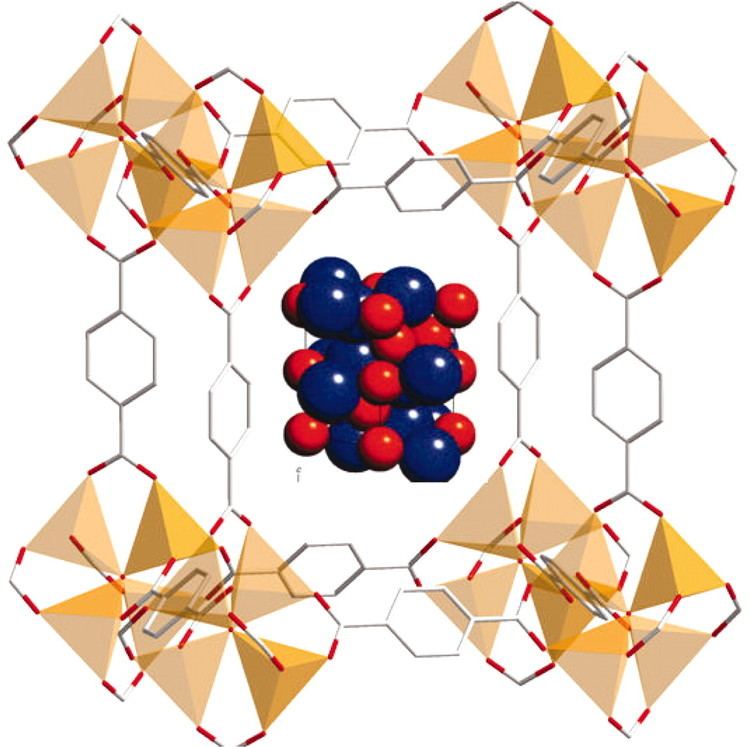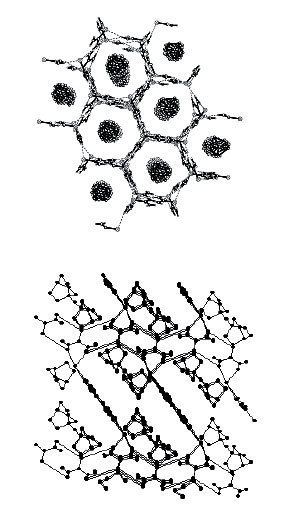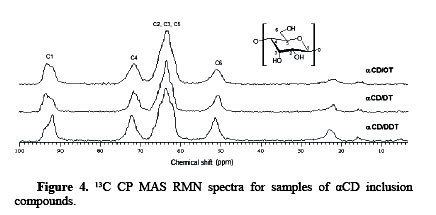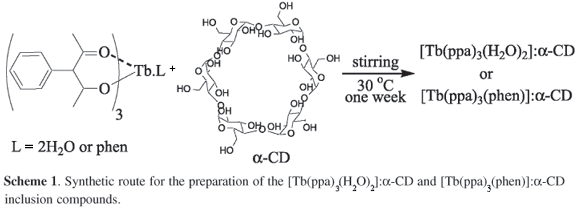 | ||
Inclusion compounds
In host-guest chemistry, an inclusion compound is a complex in which one chemical compound (the "host") forms a cavity in which molecules of a second "guest" compound are located. The definition of inclusion compounds is very broad, extending to channels formed between molecules in a crystal lattice in which guest molecules can fit. If the spaces in the host lattice are enclosed on all sides so that the guest species is ‘trapped’ as in a cage, the compound is known as a clathrate. In molecular encapsulation, a guest molecule is actually trapped inside another molecule.
Contents
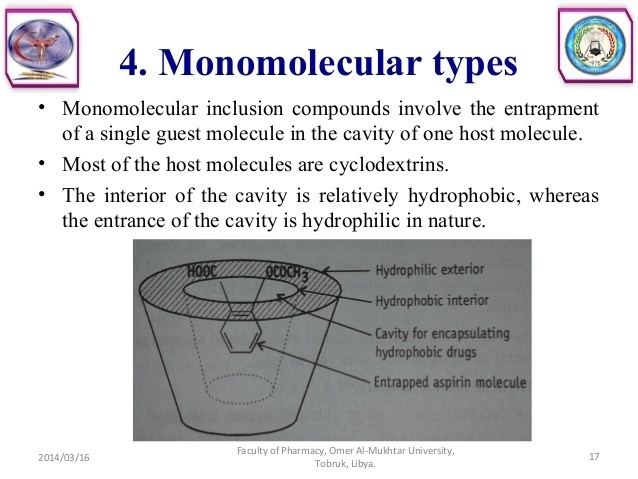
Cyclodextrin inclusion compounds
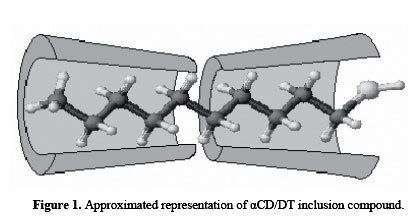
Inclusion complexes are formed between cyclodextrins and different guest molecules[1][2][3] such as ferrocene.[4] When a solution of both compounds in a 2:1 ratio in water is under hydrothermal conditions at 100 degree C for 2 days and then allowed to rest for 10 hours at room temperature orange-yellow crystals form. X-ray diffraction analysis of these crystals reveals a 4:5 inclusion complex with 4 molecules of ferrocene included in the cavity of 4 cyclodextrine molecules and with the fifth ferrocene molecule sandwiched between two stacks of ferrocene – cyclodextrine dimers.
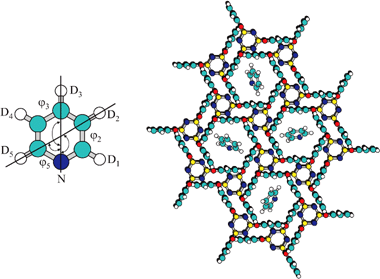
Cyclodextrin also forms inclusion compounds with fragrance molecules.[5] As a result, the fragrance molecules have a reduced vapor pressure and are more stable towards exposure to light and air. When incorporated into textiles the fragrance lasts much longer due to the slow-release action.

